Archive
Halloween; A Transition to Cool Crops
As I observe more and more of the subtle hints of seasonal change, I’m starting to find dates on the calendar where changes become permanent transition points. Halloween has become my new marker on the calendar for the absolute end to warm season crops, and the transition point to the cool season.
I’ve made a conscious effort to extend my growing season by incorporating new plants which can tolerate cool and downright cold weather. The most cold hardy plant I’ve got in my arsenal thus far is Swiss Chard. These colorful leaves are willing to grow straight through our harsh winter months if given a simple plastic cover to keep the snow from burying the leaves.
I was surprised to see some lettuce also growing through the snow. The lettuce above is from my sister’s garden, as my lettuce is not very photogenic due to a recent pass through the garden with the finish mower. Even thought the tops of the plants were chopped off, the base began to grow new leaves pretty quickly.
I wasn’t sure how long this collection of greens would last, so I decided to pick a good deal of the lettuce, chard and endive and enjoy a cool season salad before these greens turn to brown.
While I was looking around, I noticed that one of the cauliflower plants had grown a very large white head, so I made an attempt to pick it. I tried using scissors without much luck, then I moved onto some hand pruning sheers, also without luck. I finally decided to pull the whole plant out of the ground, and found that a hammer was needed to break the stalk. I then cut off all of the leaves, and brought it indoors.
Cauliflower has never been my favorite vegetable, but I decided that since I grew it, I might as well give it a try. The process of cooking it was very easy. Start by cutting the large head into many smaller pieces, then place them into a microwave safe bowl, with water nearly covering them. The total cooking time is around 15 minutes, but they will need to be stirred every few minutes in order to cook evenly. When they were done, this single plant provided a cheese covered snack for about 10 people. I actually liked it !
Later that same day the kids decided it was time to carve their pumpkins. I should note these were not grown in my garden, as I decided not to plant them this year.
Maybe next year I’ll plant a few pumpkins from the seeds I gathered while carving. Either way, I know I will see a few, as the pumpkin guts harvested while cutting found their way to the compost pile.
You may also like:
Sandies Garden in August
I stopped by Sandy & Davies house to return a hydraulic jack I had borrowed, and just like any other time I visit, I had to check out their garden. My niece led the way into the tomato patch, where she sampled, and declared ready, many of the cherry tomatoes that were growing.
I usually plant a few Red Alert cherry tomatoes in my garden, simply because they ripen sooner then the larger slicing tomatoes. Sandy is far more devoted to the cherries then I, and she even visited a commercial greenhouse to purchase these plants ( I usually start of all the tomatoes and peppers for the whole family in my greenhouse).
I planted Waltham Butternut squash hoping to repeat the success I had last year, but the plants are doing poorly. Sandy’s plants are doing great though, and I often find myself wondering why our two gardens behave so much differently. I guess it’s got a lot to do with water and soil. My garden is sometimes too well drained, but Sandy’s garden tends to retain a good amount of moisture. Her garden also enjoys some shade from a row of trees nearby, where my garden is exposed to the direct sun like an ant in the Sahara desert.
The Swiss Chard in both gardens are doing great. The colors alone are worth planting for, but having this plant be edible, and good for you is an extra bonus.
I couldn’t believe how well the celery plants were doing. These are the same tiny seeds that grew so slowly after I planted them 11 weeks before the last frost. They are nearly as tall as the zucchini plants in the row beside them, and it’s pretty amazing to see one of the harder to grow plants do well. I still need to work on my gardening skills with eggplant, kohlrabi, and pak choi, but I’m getting better every year.
Garden Stromboli
Finding something to eat for one person often is very easy, but unhealthy. This little recipe to pretty easy to work through, and I imagine it’s quite healthy too. The ingredient list is short:
1.) One or Two hamburgers
2.) A chunk of butter
3.) One or Two large peppers
4.) A medium to large onion
5.) One roll of Pillsbury Bread sticks with Garlic.
6.) One small jar of spaghetti sauce.
7.) Shredded Cheese
8.) Olive Oil
9.) Optionally add minced garlic and other veggies such as tomatoes, celery, zucchini, etc.
To begin, cook the hamburger meat in a frying pan with a chunk of butter, carefully crushing the patty into ground meat with a spatula. Add in chopped onions and peppers when the meat is nearly cooked. At this point you could add other veggies and chunks of a garlic clove.
Next, place some aluminum foil over a cookie sheet, and spread some olive oil on the foil. Make sure to spread it around evenly. Unroll the bread sticks mix onto the foil. You may wish to cut the dough along the lines in order to make two smaller Stromboli.
Spread the spaghetti sauce on the uncooked dough, then add the chop meat and fried veggies, even distributing them. I’ve added some chopped up onion stems to the mixture, as well as lots of garlic salt and a bit of pepper.
Next, fold over the dough, and pitch it together. You may notice in the photo how I had used tomato paste and added Swiss chard to the mix. Don’t do that ! The paste and chard together made these Stromboli taste like a bar of iron.
When you’ve sealed up the pockets, place them in the oven and bake until the dough turns a nice brown. I long ago lost the temperature setting knob from my stove, so I’d recommend you use the same method I did, start with a low temp, and slowly turn it up till the dough cooks.
You may wish to add additional veggies to your Stromboli, but I’d recommend you cook them before placing them on the uncooked dough. The stove doesn’t cook the veggies in the amount of time it takes for the bread to darken.
Some things to remember:
1.) Do not use Tomato Paste in place of the Spaghetti sauce. It’s gross.
2.) Swiss Chard will overpower all of the other tastes, and in my opinion ruin the Stromboli.
3.) Use olive oil on the aluminum foil. Without this protection, the dough will stick to the foil and make a mess.
Hope you like this recipe as much as I did when I got it right !
New Views
I decided to take some photos from odd angles in an attempt to find some really unique perspectives. I started with this sunflower, positioning myself so that the sun would be directly behind the flower. While to photo has some nice qualities, the seeds are washed out. I do like the colors produced as the solar rays passed through the petals, and It’s really cool to see a bug flying toward the flower in the top left hand corner.
I then decided to try a similar shot with some of my Swiss chard leaves, and I got a similar shot of tones produced as the suns rays ran through the leaf. The yellow in the photo is just how the plant looks in real life, and I have not altered the colors in any way.
When I decided to try some other angles, and avoid the sun, I pointed my lens at these festive chard leaves basking in the sun. In the background, peas grow to about 7 feet tall, and here they look enormous. The blue sky in the background gives the photo a quality of paradise, and this is often how I remember the valley when I’m away.
Since I had already gotten dirty, I figured I’d take a ground level shot of the Kohlrabi I direct seeded. Here the base of the plant is about the thickness of a pencil, and it has a lot of growing to do before becoming the shape and size of a baseball if all goes well. I had wanted to plant kohlrabi after realizing I had missed it, and when I got to the seed section, they were our of most seeds, but they did have this purple colored variety. I figure it can’t taste too much different from the light green toned plants that sprung forth in last years garden.
At the end of the day I decided to try my luck waiting for the ground hog to appear while my scope and generous supply of lead were nearby. Soon I found myself creating a hammock, and not long after that, I found my self waking up in it. So much for keeping an eye peeled. I guess it’s that time of year where I can relax a bit, so long as I can keep up with the weeds that constantly grow.
The Bright Side
After detailing the war that has been ravaging portions of my garden in yesterdays post, I thought I would return my posts back to the bright side of things. The chard that I’ve been eating at least twice a week is doing great, still growing in wondrous colors. It’s very cool to pick and eat colorful food, and it’s an added bonus to an already healthy meal. The chard I planted last spring is just now going to seed, and I’m trying to help the plants with lots of water as they give their last energy to a new generation of possibility. I’ll do my best to collect as much seed as possible, and distribute it to fellow gardeners.
My seven rows of Yukon Gold potatoes are doing great. The first flowers have formed on a few plants. When the flowers disappear, the plants will begin production of my favorite spuds. There were three shorter rows of potatoes last year, and they lasted nearly to February. Seven rows should provide enough golden goodness to last all winter and have enough seed potatoes for next year.
This year I forgot to start some Tomatillo seedlings in the greenhouse, but Mother Nature decided to start some for me, and they are located all over the garden. The plants that do not get misidentified as weeds should grow to carry the green colored tomato-like food. I’ll then make it a point to save seeds this year.
My lettuce patch is doing great, and I really think the puppy within 30 feet of these leafy greens is the primary reason why. The endive I’ve planted further away is being nibbled down to nothing, so I know the critters have an appetite for lettuce. I’ve been trying to keep this area of the garden as free of weeds as possible. In the photo you can see how much trouble I’ve had controlling the grass.
I took a shot from one end of the garden, looking down towards the opposite edge. A good deal of the green in the photo is comprised of weeds, but I’m keeping them shorter then the garden plants, and many of my family members are beginning to help with the pest plant control. I even had help from two of my niece’s friends.
New Beans and Colorful Chard
I’m always trying new things in the garden, and I’ve been surprised and disappointed in the past. The pole bean above has surprised me already with it’s very cool looking leaves. They are more compact, and smoother then most bean plants, and the glossy leaves carry a darker green then others.
Another new bean variety that I’m growing is the Giant Speckled Pole Lima Bean. The leaves on this plant are more similar to other beans then the Brown Crowder above, but just like the Crowder, they are smooth and glossy. I’ve planted these two types far away from the rest of the beans I’m growing since they are both of the climbing pole habit.
If the beans grow well, I should have a small zip lock bag full for each 15 foot row I’ve planted. I did this last year with some Ying Yang beans, and rather then making chilli, I saved the beans till this spring and planted nearly ten rows.
I couldn’t wait any longer before trying out some colorful chard I’ve planted this spring, so I picked a leaf of each variety. The yellow and red shard were planted in the greenhouse this spring, and the white stalk leaves are from last years chard plants. I continue to be very impressed with chard, not only how it can grow in the cold of PA winters, but also in how it makes me feel so much better after eating it. The plant carries a great deal of vitamins, especially vitamin K, so I imagine they are the reason for my change in mood.
I chopped the chard up, and prepared a pan with a 1/6 stick of butter. I placed the heat on about medium and threw in some Stuttgarter and Red Onions frozen from last year. I added the chopped chard and cooked it until it carried brown highlights. The small bowl shown in the picture was about four inches across, so those large leaves don’t go very far once cooked, but they were o-so-good, and I’m in a very positive mindset today.
Puppy Patrol
I’ve been contemplating the right time to have my first home grown salad, but I didn’t want to harvest the leaves before my lettuce and chard plants got a good start. They have been growing very well under the protective shield of chicken wire. The other day I decided that it was time to weed them, and so I removed the wire and cleared out all of the unwanted plants. I then replaced the cover of wire and left with an expectation of a fresh salad in a day or two.
So much for a day or two. When I replaced the protective wire, I accidentally left a small hole, and an animal of some sort took that opportunity as an invitation for a gourmet salad lunch. This is the row containing a mix of lettuces, mesclun and chard, in other words a veritable all you can eat buffet for a opportunistic critter. I was angry for a minute, until I had an idea for a counter threat to these critters. My mother had inherited a dog when my brother moved, and it was more of a burden then a companion. I drove to her house and asked to take her problem away to fix my own. This would work out well for us both, and the pup was soon in the passenger side seat of my car en route to the garden.
Harmony looked very confused when I brought her to her new home next to the garden, but after a few hours she went right to work. I hear this little puppy guarding the perimeter from her post by the greenhouse, and rather then keep me awake at night, it brings a smile to this gardeners face as I sleep easy knowing all of the work I’ve invested is now guarded by a trigger happy barking machine. Just her smell alone should keep most critters away. She’ll be earning a fare wage too, room, board, and a special meal from time to time if her barks keep out the critters.
Everything and Cheese
I tried something new with some Macaroni and Cheese the other day: I added Ground Beef, Onions, Carrots and Asparagus to the mix, then wrapped it all up in some Swiss Chard. It actually tasted pretty good, and I’m sure it adds to the vitamin content of the mac and cheese. So here is how I made it:
Cook the noodles as directed on the packaging. While the noodles are boiling, throw in some frozen onions and carrots.
Place a pound of ground beef in a frying pan with butter, then stir in a half a can of Asparagus, and some minced garlic.
When the noodles are nearly cooked and the beef is thoroughly fried, mix the beef into the pot of water. This is an unusual step, but it makes stirring in the cheese easier. When the noodles are cooked strain, then add the cheese packet.
The mac and cheese is very good with or without the Chard. Now I’m wondering how the whole thing would taste if placed in a deep fryer…. Maybe next time I’ll give it a try.
Lettuce Re-Mix
Last years lettuce was off to a great start, until the rest of the work of the season kicked in, and weeds grew over the plants to the point were they were all but smothered. This year, I’ve decided to take my lettuce much more seriously. I’ve selected a diverse set of lettuces, mesclun and chard to make a very colorful, flavorful and nutritious salad, so when it came to actually choosing which type of lettuce to plant first, I was a bit torn. I was unsure when I would get time to plant more, so I did the only logical thing I could think of: I planted a row of Lettuce, Mesclun & Chard all mixed up.
You can see two types of Lettuce (middle and far bottom), Mesclun (top), and red Chard (middle bottom). This arrangement should come in handy if I find myself with time to only weed one row of lettuce. I can then weed the mix of lettuce row and be assured lots of salad.
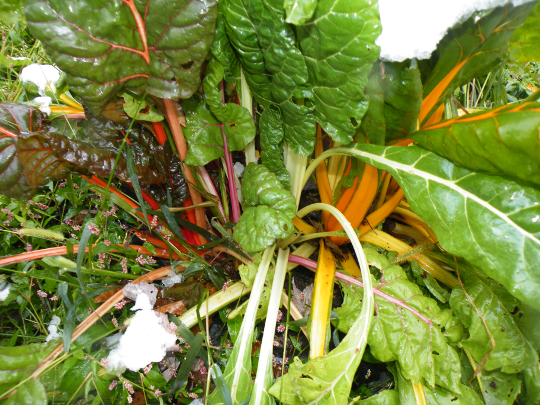

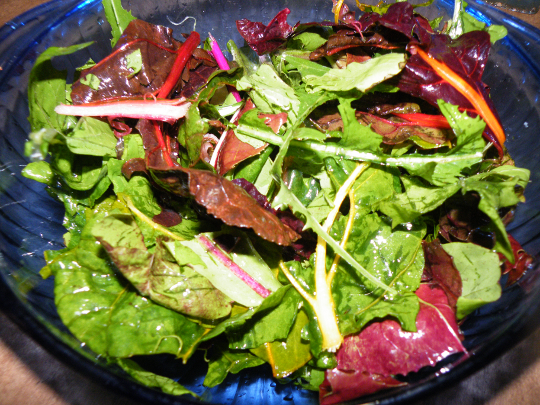
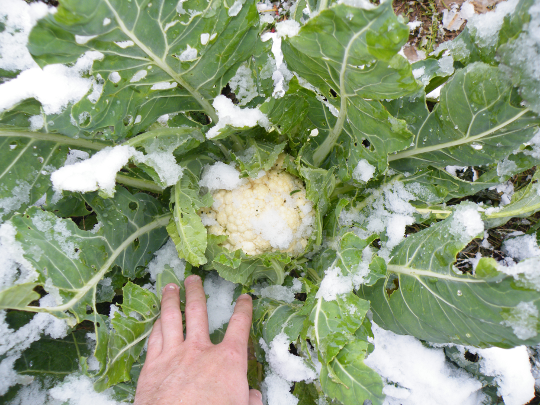
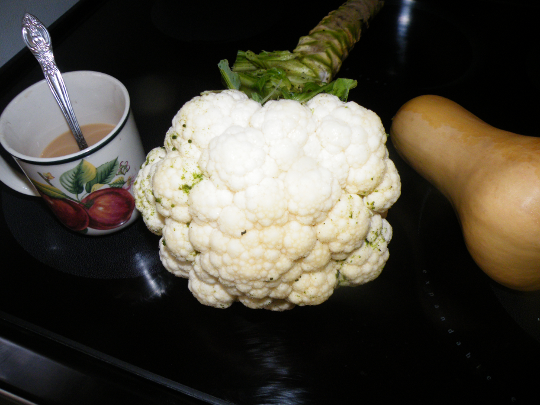



 New Views
New Views Plants That are New To My Garden
Plants That are New To My Garden Breaking Ground for Cold Weather Crops
Breaking Ground for Cold Weather Crops Sandies Garden in August
Sandies Garden in August New Beans and Colorful Chard
New Beans and Colorful Chard No Need For A New Arc
No Need For A New Arc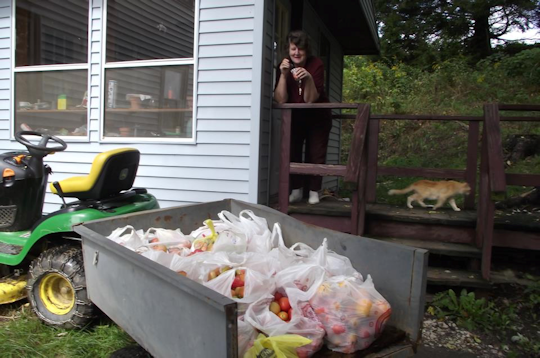
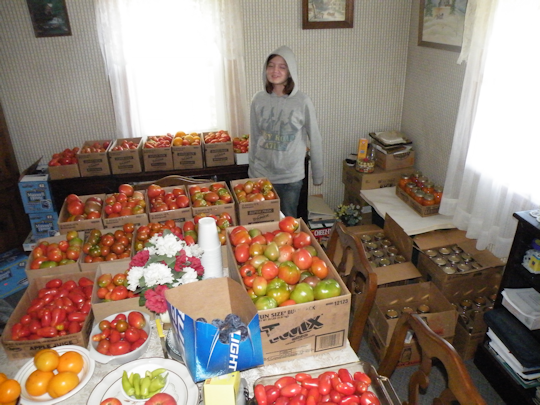


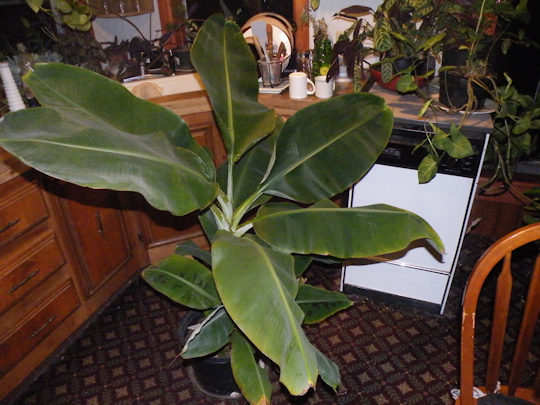

 I’ve Become a Tomato
I’ve Become a Tomato Tis the Season for Picking
Tis the Season for Picking Tomatoes, Tomatoes, Tomatoes…
Tomatoes, Tomatoes, Tomatoes… Checking on the Tomato Patch
Checking on the Tomato Patch Photos From the Tomato Patch.
Photos From the Tomato Patch. A bittersweet harvest
A bittersweet harvest 2011 Tomatoes
2011 Tomatoes August 4th Harvest
August 4th Harvest Tomatoes
Tomatoes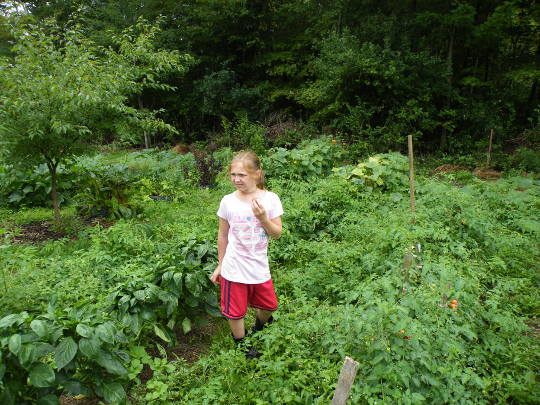
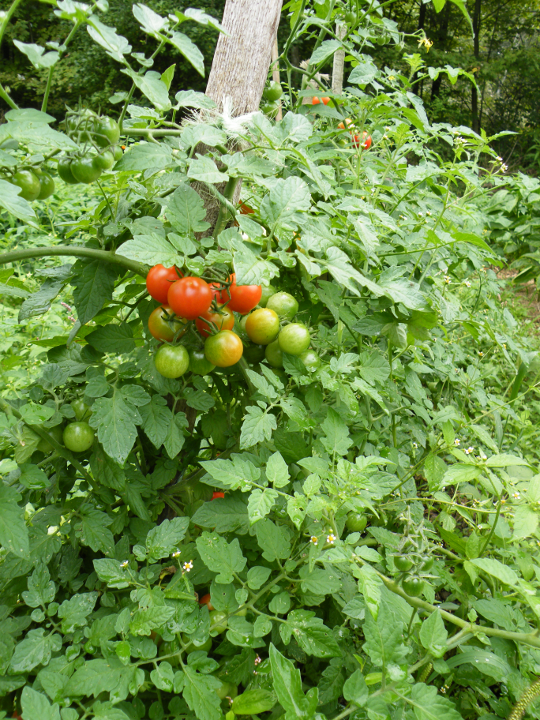
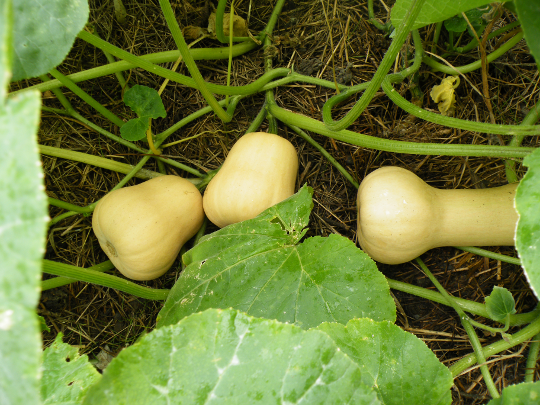
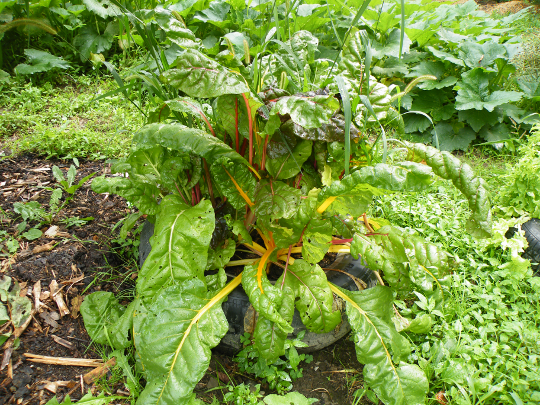

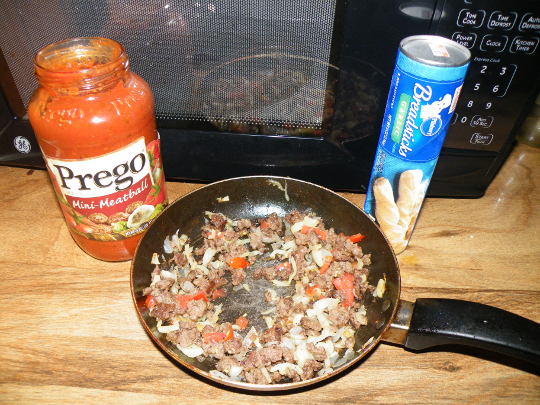
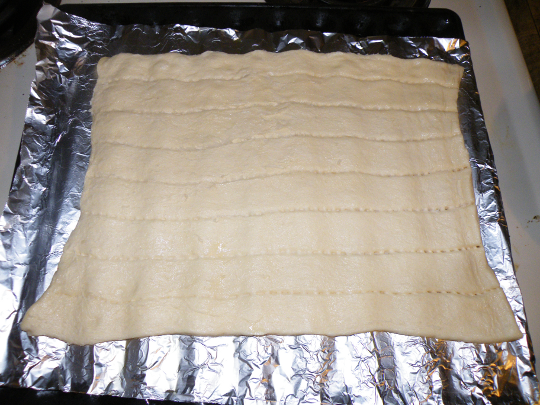
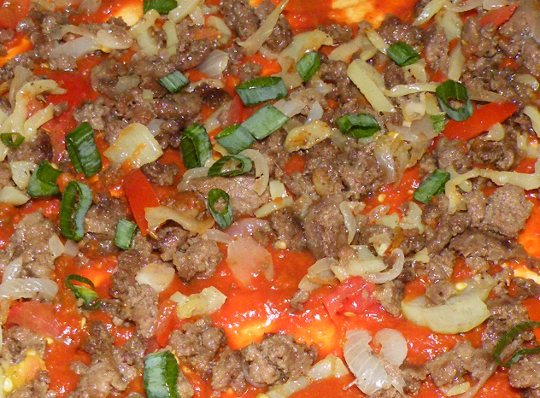
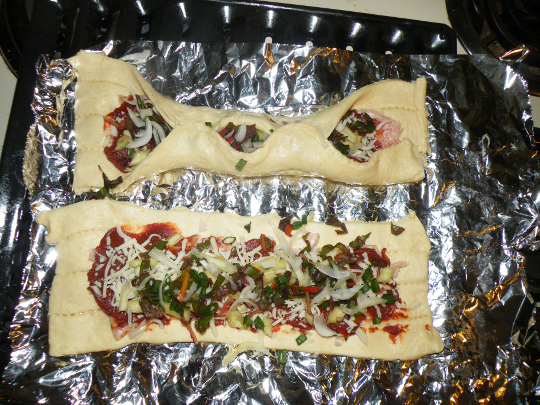
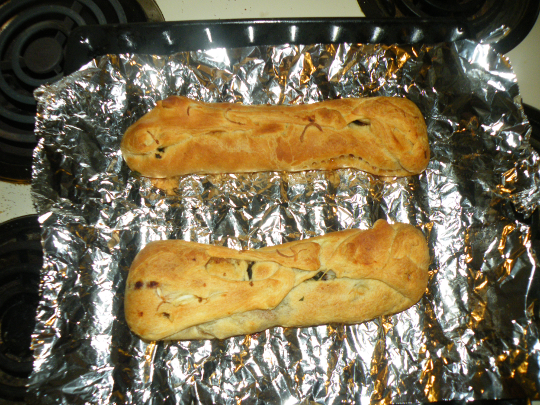
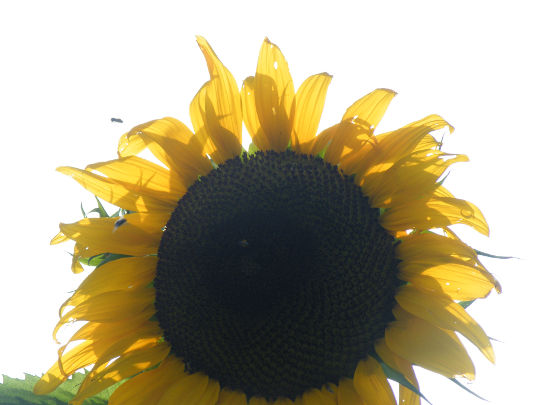

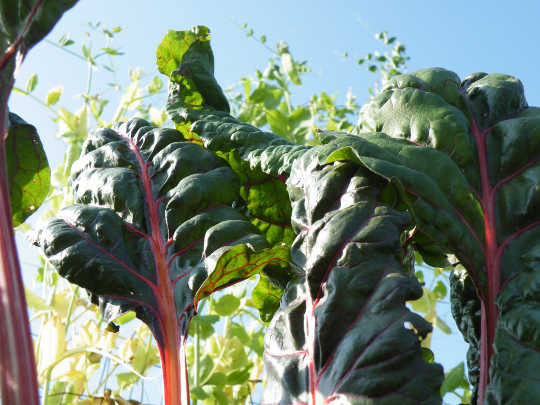
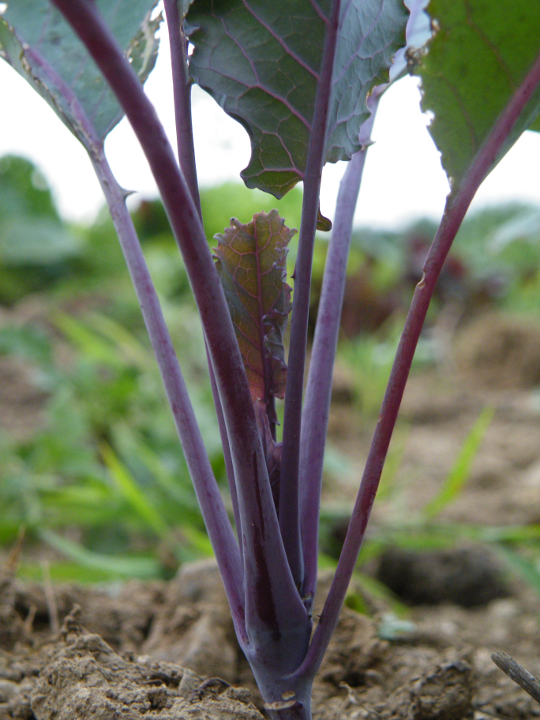
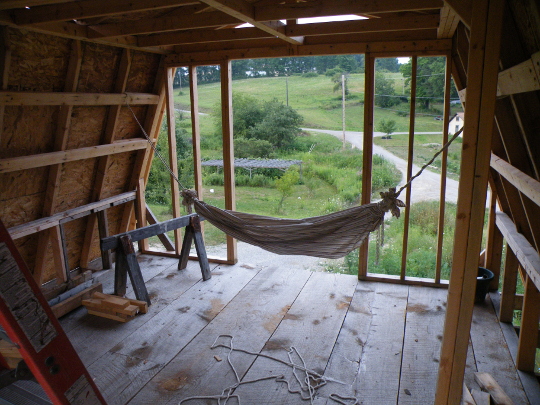

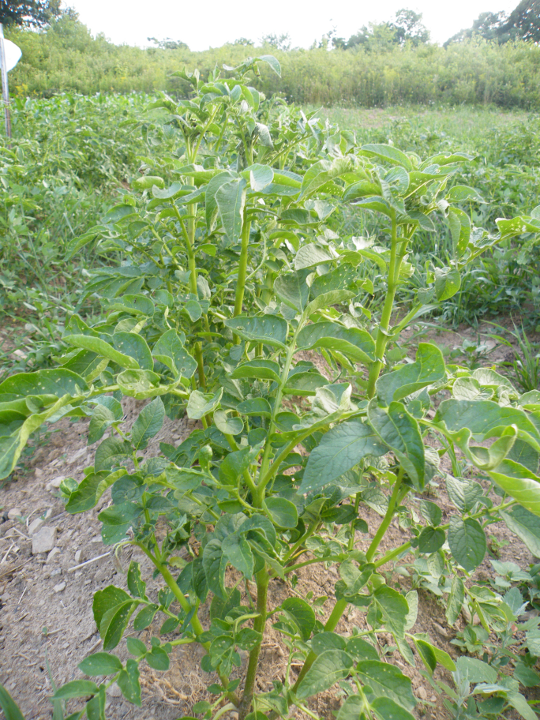
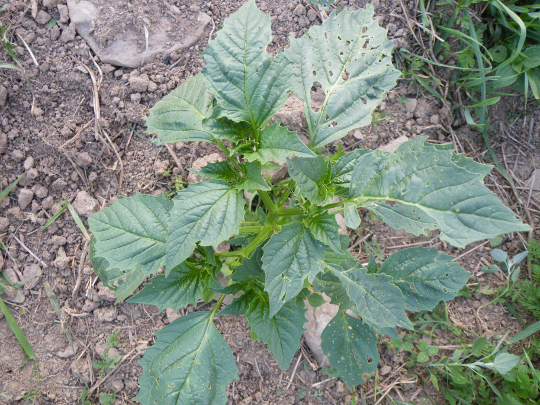
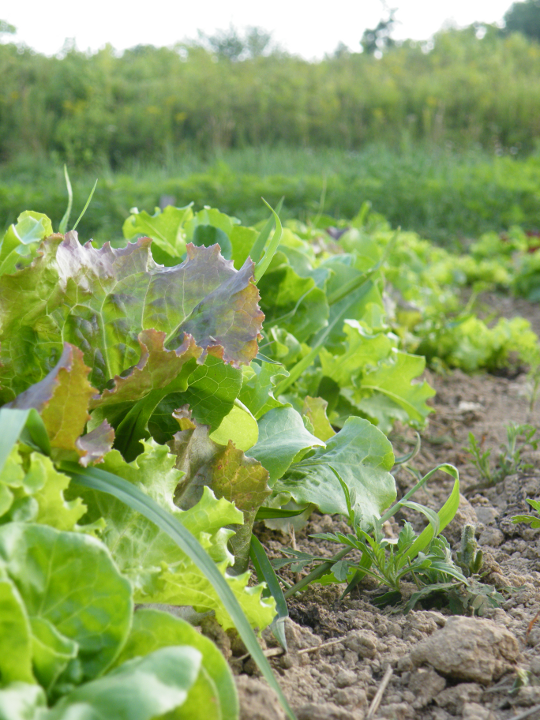

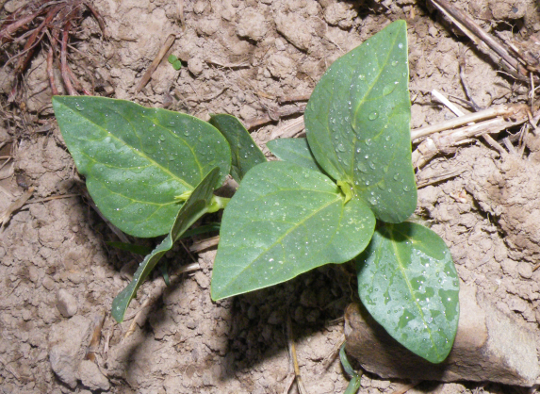
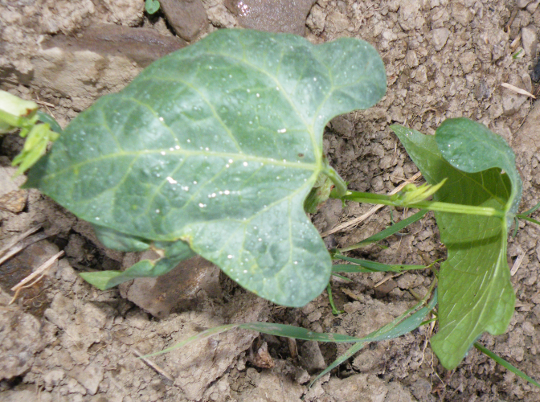
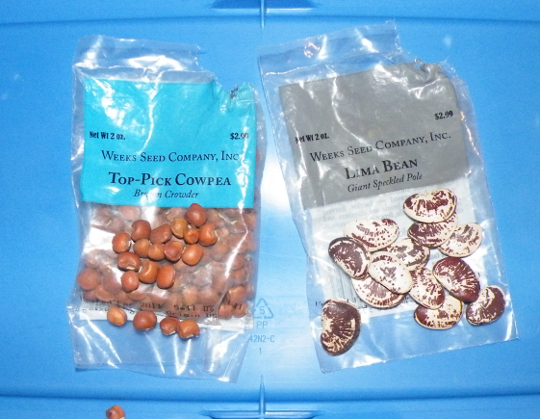
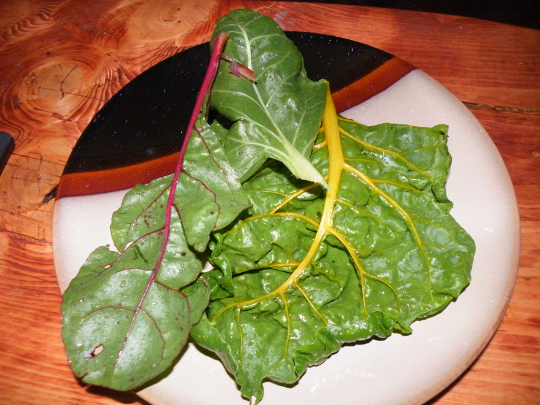
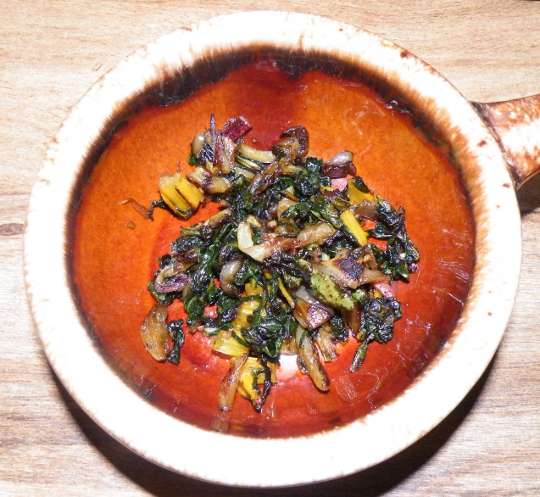
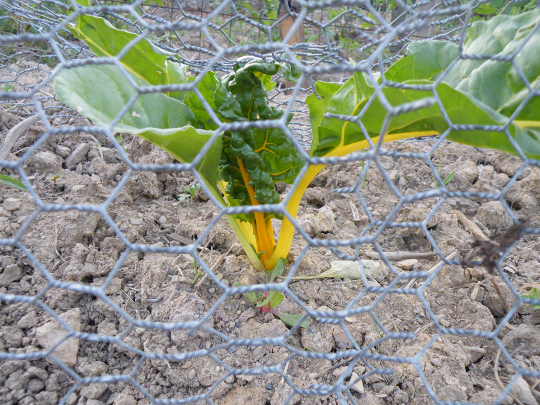
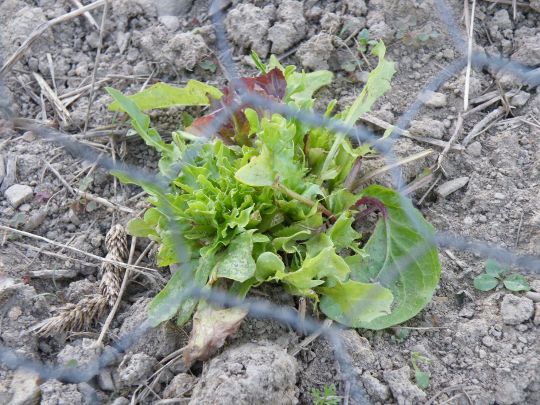

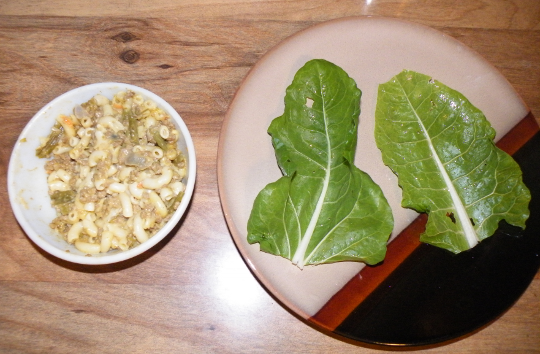
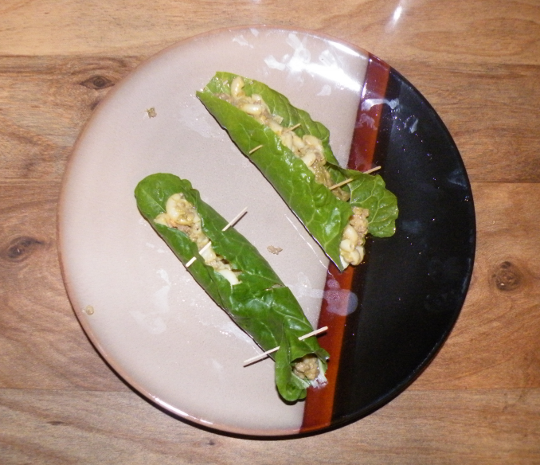

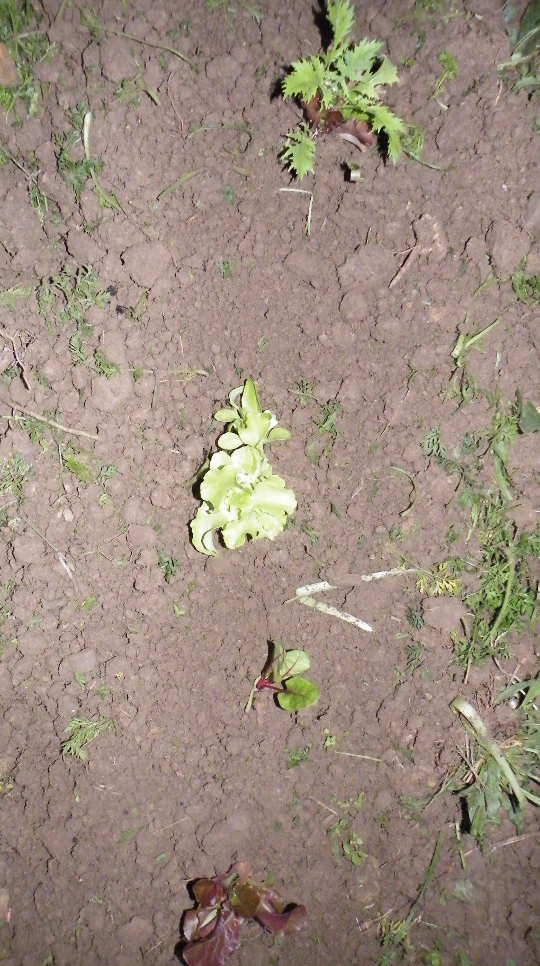









Comments: